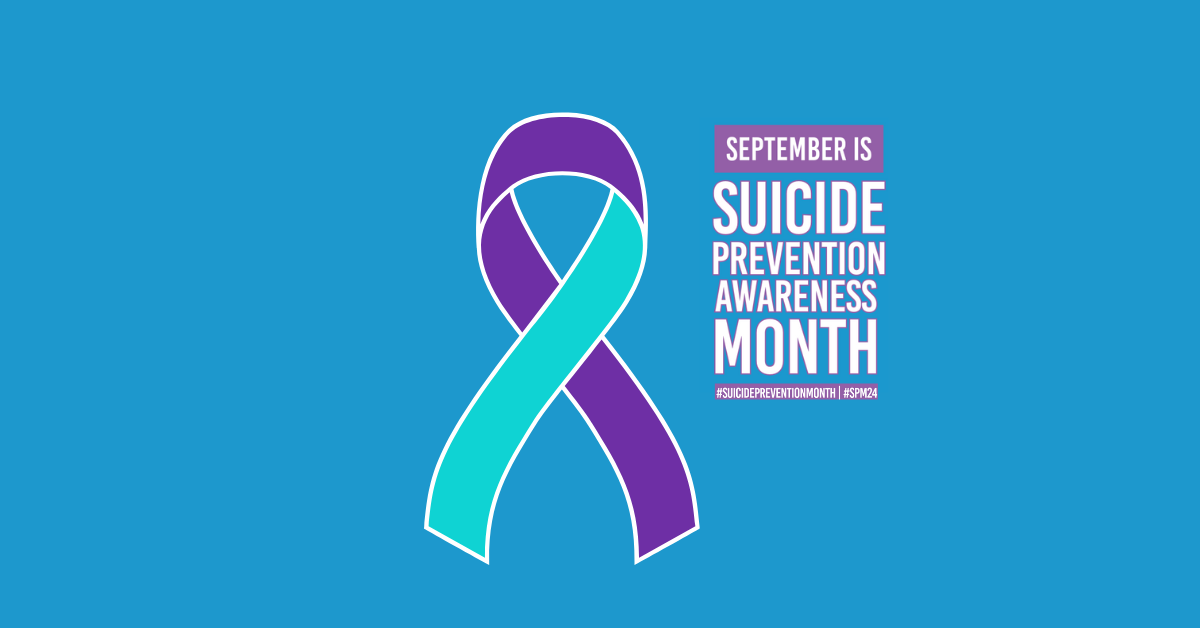As the new school year settles in, many students are reconnecting with friends, getting to know their teachers, and starting to get the hang of new subjects and lessons. This time is often filled with excitement and anticipation to see familiar faces and have new experiences. However, it’s crucial to remember that not every student feels this way.
Some may still be trying to find their place, especially those who are new to the school or haven’t yet found a friend to share lunch with. For these kids, returning to school can feel a bit overwhelming and, at times, a little scary. The pressure to fit in and navigate unfamiliar social dynamics can lead to feelings of isolation, anxiety, and loneliness.
September is Suicide Prevention Awareness Month, a time to pause from the newness of the year and reflect on a serious issue that affects many young people. It’s heartbreaking to acknowledge that suicide has been the second leading cause of death among individuals aged 10 to 24 since 2021 and was ranked third in years prior. This reality reminds us how very necessary it is to look for signs of distress in our students and to reach out with compassion and understanding.
Look for Signs
Spotting the signs that a student may be struggling is the first step toward offering help. But as the new year has only begun and educators have only just met their students, the signs may be more subtle to start. It’s also important to remember that not everyone will show clear signs of distress; some may quietly suffer. However, as the year progresses, here are some indications to look for:
- Changes in Behavior: If you notice a student withdrawing from social activities, experiencing a sudden drop in grades, or appearing less motivated, it might signal that they need support.
- Mood Swings: Watch for extreme mood swings, irritability, or persistent feelings of sadness. These could be signs that someone is struggling more than they let on.
- Talking About Death: If a student frequently talks about death or expresses feelings of hopelessness, it’s vital to take those words seriously and approach them with care.
- Substance Use: Drug use or alcohol can often be a way for young people to cope with emotional pain.
- Feeling Unwell: Sometimes, emotional distress manifests as physical symptoms like headaches or stomach aches.
Make Meaningful Connections
As a caring school community—friends, teachers, and families—we must commit to fostering open conversations about mental health. We all have a role to play in making sure that every student feels supported and included. A kind word, an inviting gesture, or simply taking the time to check in can make a world of difference.
As we observe Suicide Prevention Awareness Month, here are some steps we can take:
- Educate Ourselves and Others: Understanding mental health and the signs of distress can help us create a more supportive community.
- Encourage Open Discussion: Create spaces where students feel safe sharing their feelings. Normalize discussions about mental health and the challenges of making friends to reduce stigma.
- Highlight Available Resources: Ensure students know where to turn for help. Share information about hotlines, counseling services, and school resources.
- Build Inclusive Communities: Encourage activities that foster connection and friendship. Whether through clubs, sports, or group projects, help students find their place and feel like they belong.
- Be a Listening Ear: Sometimes, the most impactful thing you can do is simply be there for someone in need. Offer your support with an open heart and a non-judgmental attitude.
Lightspeed Alert Has Your Back
Spotting signs of suicidal thoughts can be challenging, which is why Lightspeed Alert is such a valuable resource. This tool uses advanced AI to monitor students’ online activities across platforms like social media and web browsers, looking for signs of distress or self-harm. When it identifies a potential issue, trained safety specialists assess the situation to understand how urgent it is and communicate them to the appropriate people.
By using Lightspeed Alert, Hays Consolidated Independent School District identified several students who were not on their counselors’ radar. John Gonzalez, Network Engineer expresses, “Kids might not show signs that something’s wrong, but they’re confiding in their devices, and we had no way to monitor that.” Since implementing Lightspeed Alert, many alerts have revealed important warning signs that may have otherwise gone unnoticed. “We’ve been able to identify students who really needed help but weren’t asking for it,” Gonzalez shares. This tool has become an essential part of reaching out to those who might be struggling in silence.
With the assurance that the most pressing concerns will be prioritized and escalated appropriately, the district’s teachers and counselors can step in sooner and provide the support their students need. They can also devote more time to building connections and fostering a safe, caring school atmosphere where every student feels valued and supported.
Conclusion
As September begins and our students embrace the new school year, let’s remind ourselves that mental health awareness is an ongoing journey. By being mindful of the signs of distress, valuing our connections, and using tools like Lightspeed Alert, we can come together to create a nurturing and supportive environment for every student. This Suicide Prevention Awareness Month, let’s show compassion and kindness, ensuring that everyone feels they have the support they need and that no one has to face their struggles alone.

